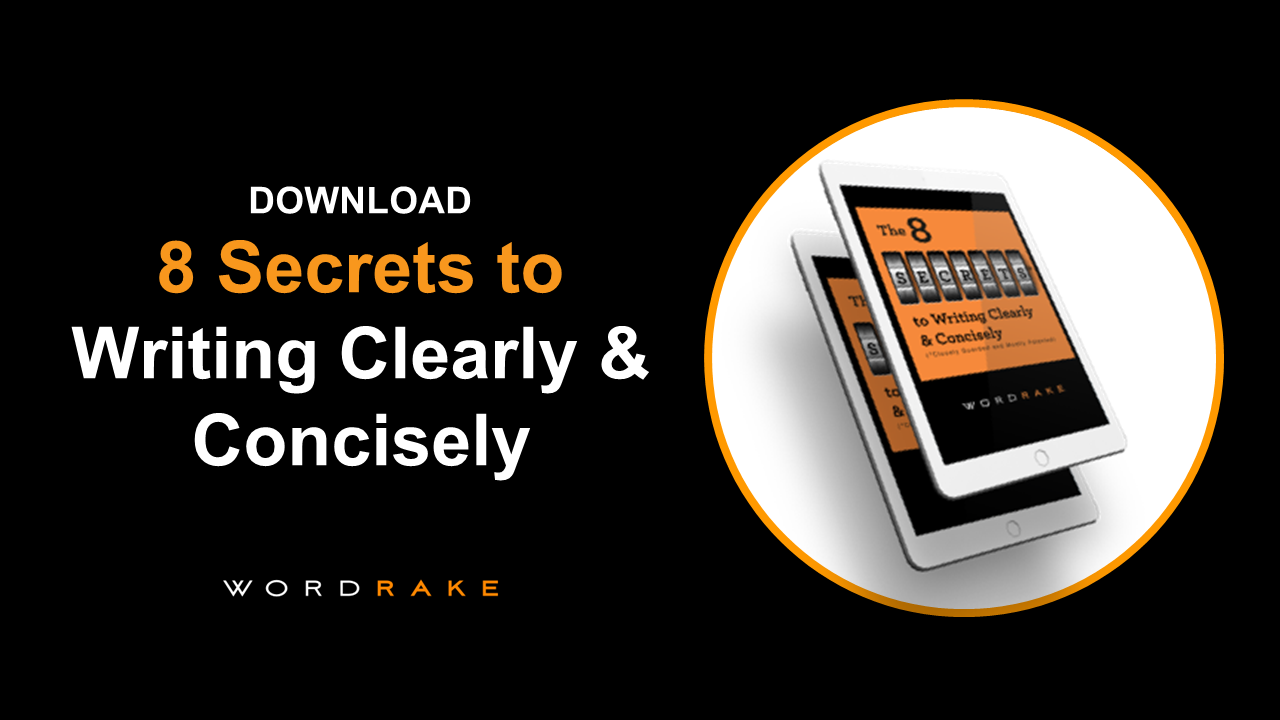We talk about plain language a lot here at WordRake, and for good reason. Our software is specifically designed to make it easier to follow plain language laws. But what are plain language laws exactly? The nation’s leading expert, Professor Michael Blasie, agreed to give us a crash course in this important legislation.
What are plain language laws?
As the name suggests, these laws require (or try to require) drafters to use plain language. Plain language laws set a writing standard that tries to increase the chance intended readers understand the drafter’s message.
Who creates plain languages laws? Any branch of government can create them, which means they come in many forms, like constitutions, statutes, regulations, or even court opinions. All 50 states and the federal government have them.
What kinds of documents do they cover?
They cover every legal document you can imagine. The electric bill you got in the mail, that website box you checked that said something about how you “read and understood the terms” of using the airport Wi-Fi, or even the election ballot you filled out might be covered by a plain language law.
Plain language laws are everywhere. There is a good chance you encounter covered documents everyday (or maybe even draft them) without knowing a plain language law applies. Here is a taste of their breadth. Some laws cover government documents ranging from governors’ budget reports and election ballots, to agency notices and tax forms, to statutes and regulations, to courts forms and hearing notices. Other laws cover private sector documents like leases, loans, and insurance policies, as well as commercial contracts, financial disclosures, or even healthcare consent forms. Still others apply to rental car waivers or settlement agreements.
The scope of each plain language law varies dramatically. A single law can be extraordinarily narrow, like one targeting a particular insurance policy clause or a school safety plan. Others cover a tremendous range of documents, like contracts for goods or services worth up to $50,000.
What do plain language laws require?
If you were a lawmaker and you wanted people to start using plain language, what precisely would you require them to do? This is a much harder question than most people realize, and it turns out lawmakers answer this question differently from one another. Generally, a plain language law applies one of four kinds of standards. There are many variations within each standard.
- Descriptive Standards describe the final document without describing the process to achieve that result. For example, such a standard might require a document to use “plain language” or be “understandable by a person of average intelligence and education” without defining these terms.
- Readability Standards score a document based on measurable objective features. For example, a common test scores a document on a 1 to 100 scale after measuring how many syllables are in each word and how many words are in each sentence.
- Features Standards list a series of writing features a document must use or avoid. For instance, such a standard might require headers and a table of contents while prohibiting Latin and double negatives.
- Hybrid Standards combine a Readability Standard with a Features Standard or offer a choice between the two.
The overwhelming majority of plain language laws use Descriptive Standards, but each standard has advantages and disadvantages. As you might guess, some are predictable and precise, while others grant drafters more creativity at the expense of being unpredictable.
Which works best? That is a gigantic, open research question that scholars are working on.
What happens when documents do not comply with these laws?
Penalties vary from nonexistent to severe. Some laws are explicitly or implicitly unenforceable. Other times readers or the government can bring a lawsuit. The government might be able to fine noncompliant companies who create the document or prohibit them from using the document. Sometimes one branch of government can prevent another branch from using a document. Other laws allow courts to rewrite a document or to order a drafter to rewrite the document.
Still others are far more severe: noncompliant documents are unenforceable or void. Some even let individuals recover monetary damages or attorney fees. Some laws even allow for class action lawsuits.
Are these laws common?
Increasingly yes, but the answer depends on where you are and what kind of document you have in mind.
Currently, there are at least 998 plain language laws spread across the United States. About 230 new laws passed in the last year. All 50 states and the federal government have them. With 97 laws, Texas has the most. By contrast Nebraska has the fewest with only 3 laws. But remember, a particular law can cover a vast or limited range of documents. The massive variation between locations means a document in one state might be subject to multiple plain language laws while the same document in the state next door is subject to none. Or (even more confusingly), one document a company writes might be covered by a plain language law with one standard while a different document the same company writes might be subject to a different plain language law with a different standard. Currently, the best way to find if a plain language law covers a certain kind of document in a particular location is the book United States Plain Language Laws,
Internationally, more and more countries are experimenting with plain language laws. To what degree is difficult to know because (as of yet) there is no central database of all plain language laws everywhere in the world. Nor is there an easy way of tracking all the laws passed in any language by any government anywhere in the world.
Why do lawmakers pass plain language laws?
Reasons vary dramatically and it is hard to know what is in the minds of lawmakers. But there are some common themes. Recently, there is unique bipartisan support for plain language laws that cover government documents. The main reasons are usually a combination of improving government transparency and efficiency, fairness, making the government less burdensome, and making the government more equitable and inclusive, especially for citizens who speak different languages or have varying literacy levels. For plain language laws targeting private sector documents, consumer protection is a common justification.
In many areas of American law, the ideas of notice and fairness are often connected. The logic seems to be something like this: an act is only fair if someone had sufficient notice and that notice must be comprehensible and a notice is comprehensible if it uses plain language. Other laws may stem from specific lobbying efforts or particular events that prompted a legislative response.
One of the biggest sources of resistance to using plain language is the common belief that a legal document cannot both use plain language and be legally sufficient. But as more and more plain language laws pass and more and more documents comply with these laws, this argument gets weaker and weaker.
About Michael Blasie
Michael Blasie is the nation’s leading expert on plain language laws. He serves as a professor at Seattle University School of Law and presents nationally and internationally on designing legal documents, including in Argentina, India, Turkey, and Kazakhstan. In 2023 Plain Language Association International selected him as a keynote speaker for the biennial International Plain Language Conference.
Professor Blasie invented the method used to find, categorize, and track all U.S. plain language laws. He regularly updates his book, United States Plain Language Laws, which is the only place to find all United States plain language laws and data comparing jurisdictions, coverage, standards, and more. Most of his research on plain language laws is free to access online.
Professor Blasie serves as a writing instructor for the National Judicial College, where he teaches state and federal court judges from across the United States and the world how to improve judicial opinion writing. He also teaches lawyers. Prior to becoming a professor, he spent ten years serving as a civil and criminal litigator in New York City and Denver, and as a law clerk to Judge David Richman. Professor Blasie earned a law degree at New York University School of Law and his Bachelor of Arts from Hamilton College. You can find him on LinkedIn and Twitter/X.
.jpg)






